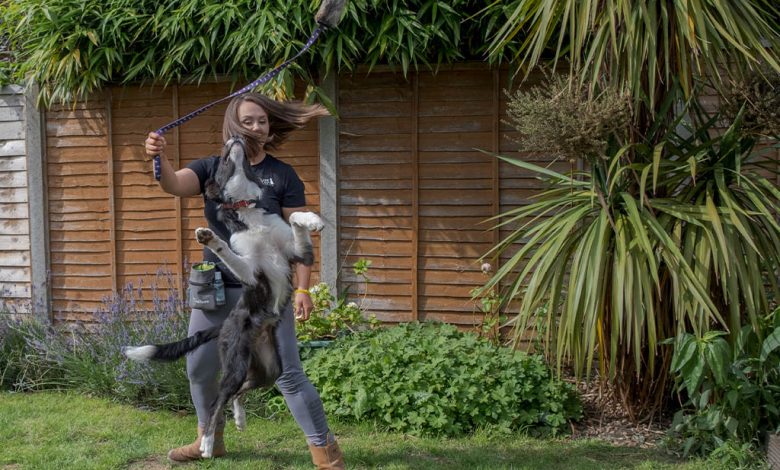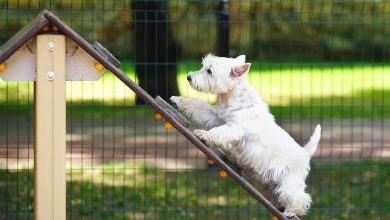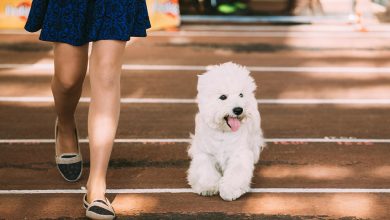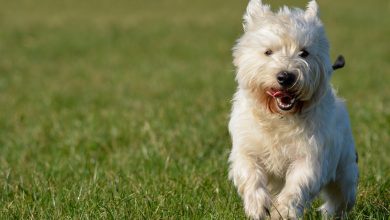Turbo-Charge Your Westie’s Recall
Practice equals improvement in a dog’s behaviour.
“The design and type of your dog’s harness, leads, or collar, can also greatly impact your success in training”.
West Highland White Terriers are one of the loveliest breeds in the world. If you ever meet a fellow Westie owner there is an instant connection. You know you have met a friend.
Everyone who adores these characterful little dogs will know the joy they bring to our lives every single day. I for one, am no stranger to the unparalleled love of a West Highland White Terrier.
My Westie Experience
Although I am now a Border Collie fanatic my last dog was a Westie. His name was Pablo (affectionately known as “Doggy” in his golden years).
He came to me at the age of two from Lord Whisky Animal Sanctuary in Kent after being abandoned in an empty house. Thankfully the RSPCA, (with help from the Kent Police) were able to rescue him and find a forever home who would truly cherish him. And my goodness – he was so loved.
That little dog arrived at my door completely untrained. A total scoundrel with energy in droves. He had no concept of living with people or dogs – recall was the least of our problems. Life was nothing short of chaos. He was my biggest project. Those first few months saw him go from delinquent teenager to the most charming dog I have ever known.
As I always tell my clients, consistent training is a magical journey. We chipped away at behaviours every day until that little dog flourished. I believe that given the chance, all dogs can be fantastic at obedience.
Dear little Doggy became the greatest asset to my dog training career and life. He assisted hundreds of puppies in learning how to be calm and develop splendid recall right until Covid-19 saw us face an unprecedented time in all our lives, a global lockdown.
Doggy was our primary comfort in times of uncertainty, just as the thousands of dogs across the world brought their owners inner peace as the shape of or lives changed forever. For many, this meant puppy training hit a brick wall and recall went out of the window.
Since then, I have supported 100s of puppy owners achieve the obedience training they needed, to allow dogs to live freely.
These are some of my best training secrets to help you get there too.
Recall Training 101
1. Choose a specific command for recall
Dogs need a specific cue to recall successfully, their name alone won’t cut it. A command provides the dog with context.
For example, we would call “Pablo, come!” And ensure the dog could see the food in our hands.
As soon as your dog returns, lure them in close to your feet and immediately give them the food or toy you have ready for them.
This is how the dog learns to come back to you and enjoy the process. The faster they return, the bigger the handful of food should be. Most dogs cotton onto that trick double-quick.
Start at home in your house or garden before progressing to a low-distraction environment. Dogs need gradual steppingstones to reach your goal of perfect recall.
Always remember to “release” your dog from your request with a phrase such as “go sniff” when you are happy for them to walk off again. This verbal marker allows them to fully understand the beginning and end of recall.
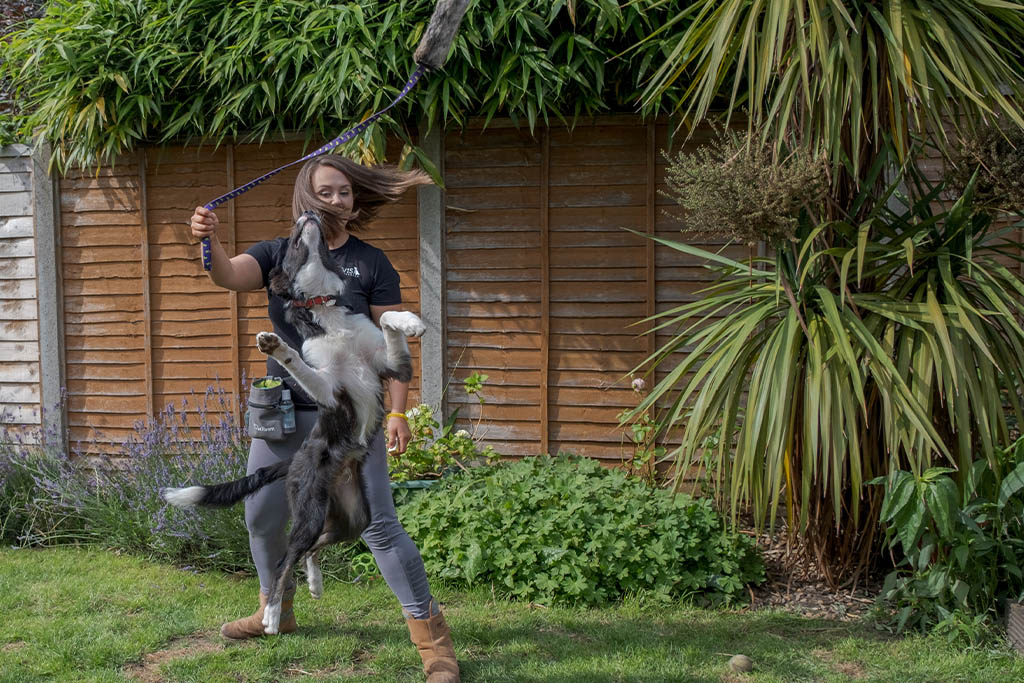
2. Motivate your dog
This brings us onto the most important part of dog training. What is your dog’s reward?
It needs to be something really special that only comes “out” during recall practice.
Everyone likes to get paid for good work and dogs are no different. Dogs must consistentlyreceive a reward for coming back to your feet. Every single time.
Always leave the house with some kind of incentive to help them understand you will give them heaven in exchange for recall. Be “treat heavy” on your walks (reward them every few steps) and you will see ahuge difference in your dog’s attention span. Fading out rewards should not be on your agenda at this stage.
If you’re struggling with a fussy eater, try engaging prey drive with a toy that will keep their eyes on the prize. At Jarvis Dog Whisperer – Boarding and Training we are very keen on utilising rabbit or faux fur tug toys. Terriers in particular love to “catch” and shake them.
Play is a fantastic way to build your relationship, but furry tug toys allow your dog to fully exercise their hunting capabilities in an appropriate setting. It is often the highest value reward available.
With a tug toy in your hand, you will find they can hardly keep their eyes off you during walks! This focus is ideal for training consistently.
3. Tools matter
The design and type of your dog’s harness, leads or collar can also greatly impact your success in training.
I have always been completely against extendable leads, even with small dogs. There are 100s of reasons behind it (I’ll spare you the horror stories of garrotting innocent bystanders). Ultimately, they damage training progress for most people.
Extendable leads encourage the wrong type of rapport during dog walks (one where the owner does not trust the dog and the dog has made an association that they don’t have to listen anymore). They know they are on lead and will be aware of the sheer panic you feel should that cord fail. This is not a healthy walking relationship.
Instead, I much prefer a long line – walking my dogs as if they were a horse lunging in a sand school. The long line provides slack (the weightless feeling of being off lead) and allows for the dog to roam and sniff whist also being called back successfully. They are fantastic “seat belts” in an emergency should the dog try to tear off towards a distraction.
It takes one or two walks to master holding the slack and reeling it in, but when you can work a dog on a long line their recall can make great leaps and bounds towards a bombproof return.
4. Practice makes improvement
It’s easy to become impatient with recall. However, if your dog has spent time ignoring your calls, they will need time to undo that training error.
Most dogs need 1000s of “dress rehearsals” in different places before being set free in public spaces. Before coming off the long line, all dogs should be 100% reliable around all distractions. It’s our responsibility to ensure our dogs will not invade the space of people or dogs who do not consent to their approach.
That’s a big ask of any dog and falls into the category of advanced training.
Recall can also feel more challenging if your dog is between 6 and 18 months of age.
Hormones, prey drive, fear phases, scenting ability, and new places can all impact your dog’s ability to process recall.
If your dog is relapsing in recall, remember that they need time to practice. Stay consistent and ride the wave of learning as a team. Your recall will improve in no time.


